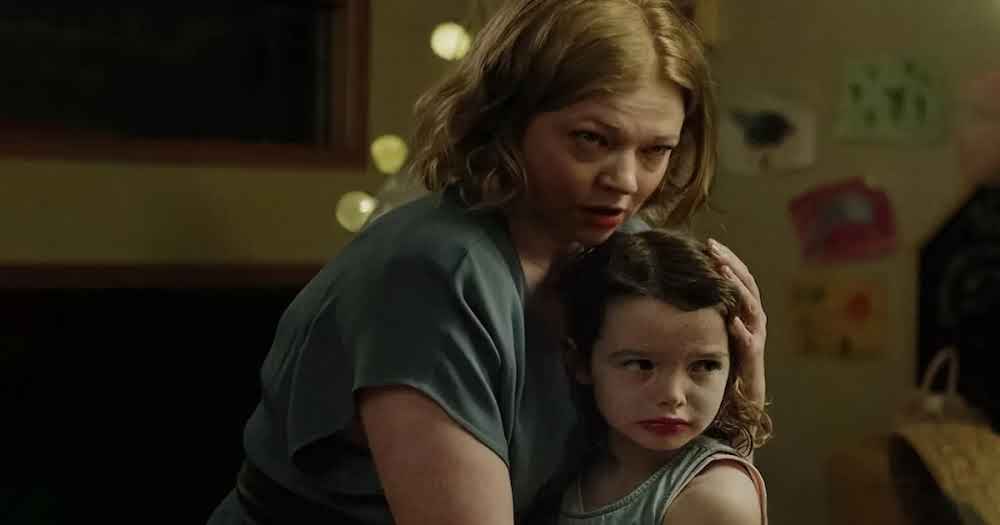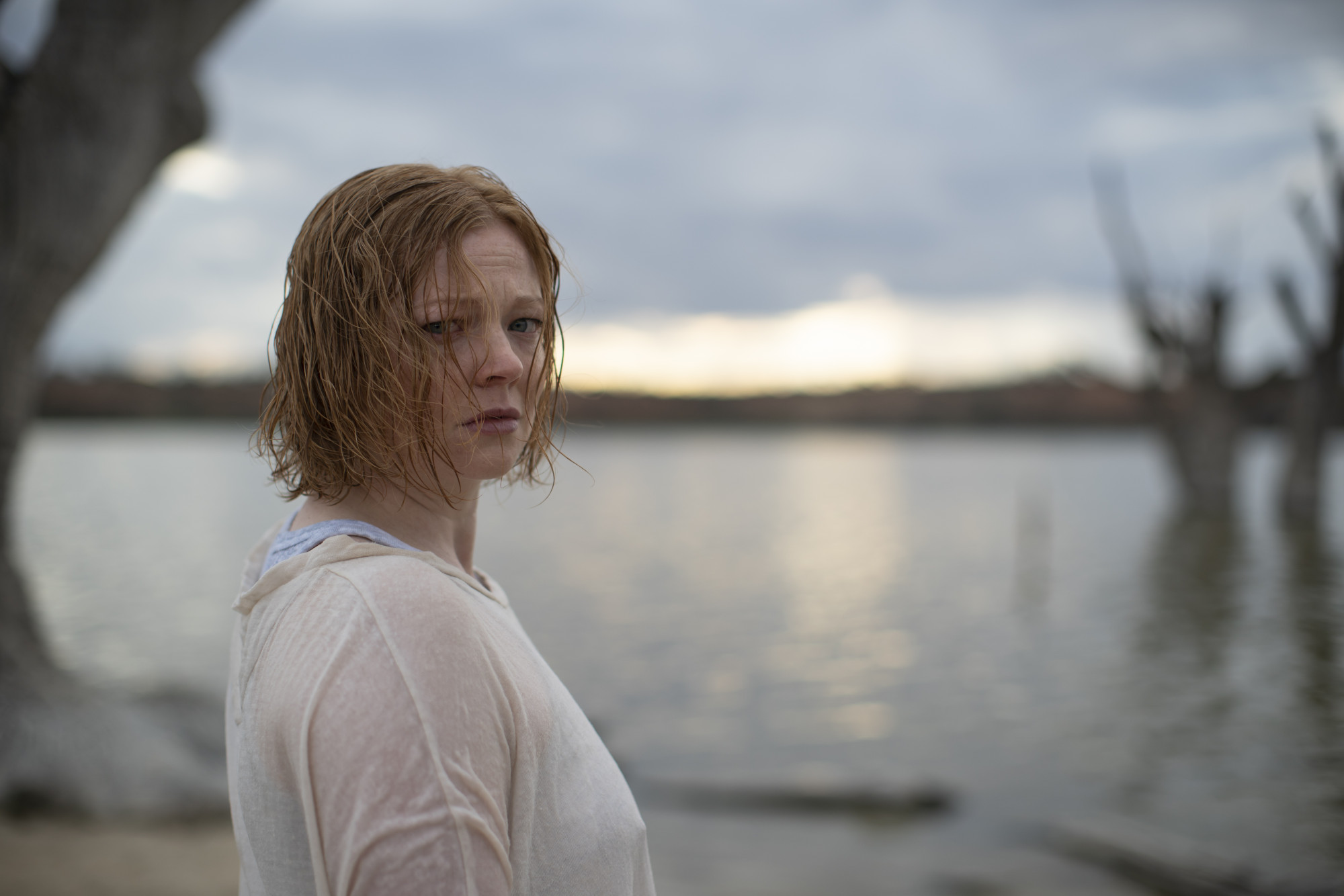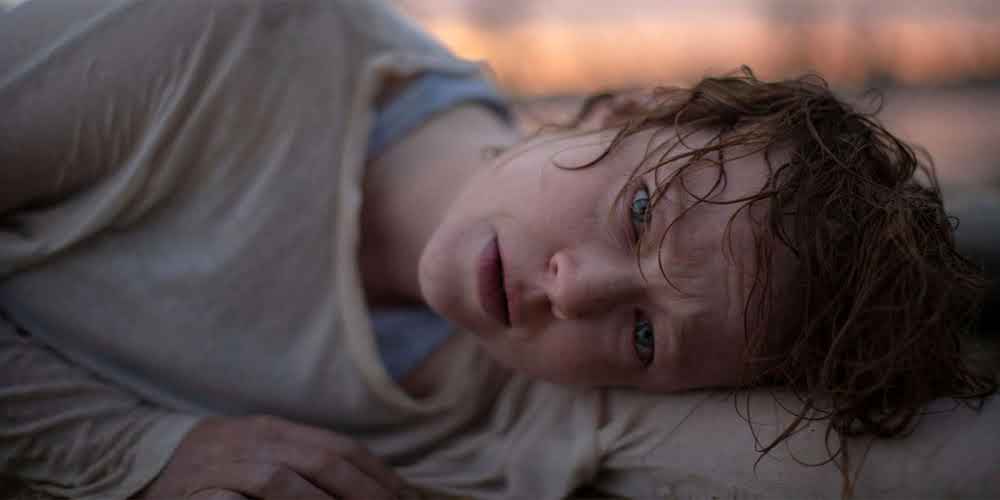What to do with a horror film that’s well made and produces the occasional chill, but is hopelessly indebted to dozens of previous horror films, particularly those from its own country’s past decade? That betwixt and between state is where Run Rabbit Run, now streaming on Netflix, finds itself. There’s no doubt that Daina Reid, who grew up in New South Wales, has a good eye and a knack for creating tension in a scene. It’s just that the script she directs from Hannah Kent, who grew up in South Australia, doesn’t give her anything we haven’t seen in the aforementioned dozens of films.
If you’ve consumed any Australian horror since 2010, it’ll be impossible to miss the allusions, intentional or otherwise, to Jennifer Kent’s The Babadook or Natalie Erika James’ Relic. The former excavates the fear in children’s storybook characters and the terror of a single mother coping with a disturbed child. The latter takes on the inherent horrors of dementia. Run Rabbit Run throws these together into a single movie and includes an array of familiar horror iconography, such as children’s drawings of violent images, haunting masks made of construction paper and string, and for some reason, a white rabbit hopping into nearly every scene. If this were our first exposure to any of this stuff, it might work like gangbusters. It isn’t, and doesn’t.
Reid and Kent have an excellent viewer surrogate for this content, though, in one of the most talented Australian actors working today, fresh off her stint on Succession. Sarah Snook plays Sarah, a divorced mum who has just lost her father, and is doing her share of raising her daughter Mia (Lily LaTorre) with her ex Pete (Damon Herriman). Sarah is estranged from her mother, Joan (Greta Scacchi), who has just been diagnosed with dementia – in fact, so estranged that the 7-year-old Mia has never met her. Their estrangement seems to stem from an incident in Sarah’s childhood, when Sarah’s sister Alice went missing.
It’s been a challenging enough time for Sarah, until one day Mia says she misses Joan, whom she’s never met. When queried about this, Mia says “I miss people I’ve never met all the time.” Thus begins an increasingly erratic period of behaviour from Mia in which she starts drawing angry images in red and black crayon on the back of her schoolwork, wearing a paper rabbit mask that she refuses to take off, and insisting that she is not Mia, but Alice – the sister who was presumed to have died 30 years ago.
Even from just a brief plot description, it’s probably easy to tell that these ideas are not particularly fresh. Movies are bountiful in the “spooky child” subgenre of horror, so if you’re going back to that well, there ought to be an injection of something new to steer us off this path into virgin territory. Run Rabbit Run seems more content to just rest comfortably within this tradition, even as it delivers engaging visuals, particularly the outback landscape where most of the second half of the film is set. (Kudos to a third female collaborator, acclaimed Australian DP Bonnie Elliott, for her camerawork.)
Thematically, it also does not offer any original insight on childhood trauma or the ageing of elderly parents. Its most interesting passage involves the dynamics of blended families, as Pete is remarried to a woman called Denise (Naomi Rukavina), who has a three-year-old from her own original marriage. In this scene, the characters walk a fine line about which adults have the right to act parentally toward which children, and which information can be shared among the adults while threading the needle about what might hurt someone’s feelings or constitute a breach of trust. Sadly, these dynamics are abandoned by about the 15-minute mark.
The presence of someone like Snook elevates our expectations for this material. Not a traditional beauty like some other breakout stars from the Australian film industry, Snook “compensates” for that – as if compensation were necessary – by confronting us with interesting choices on screen at every turn. The Spierigs’ 2014 film Predestination is an example of the kind of film Snook deserves, outright wackadoodle at certain points but impossible to forget. It’s very possible that Snook’s accomplished performance is the only thing most viewers will remember about Run Rabbit Run two years from now.
Which is a shame, because Australian films don’t get that many opportunities on the kind of world stage that Netflix provides, especially when the movie is getting promoted like Run Rabbit Run is getting promoted. When the results are only generically prestigious, it does the filmmakers proud enough in the moment, but the moment is the only place it exists. Memorable films are meant to endure into their long-term spot in the culture, but Run Rabbit Run will likely scamper off into the bushes and never be seen again.
Run Rabbit Run is currently streaming on Netflix.


